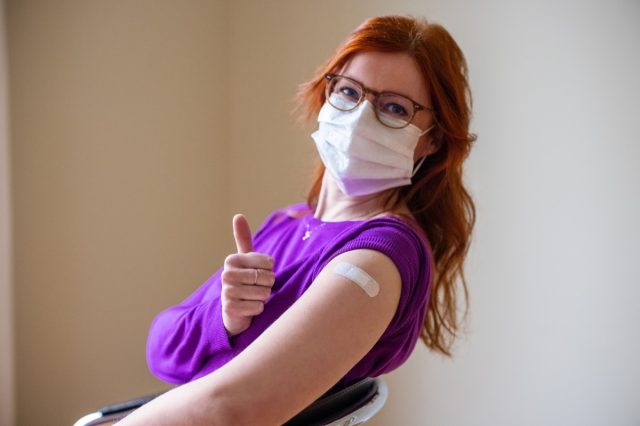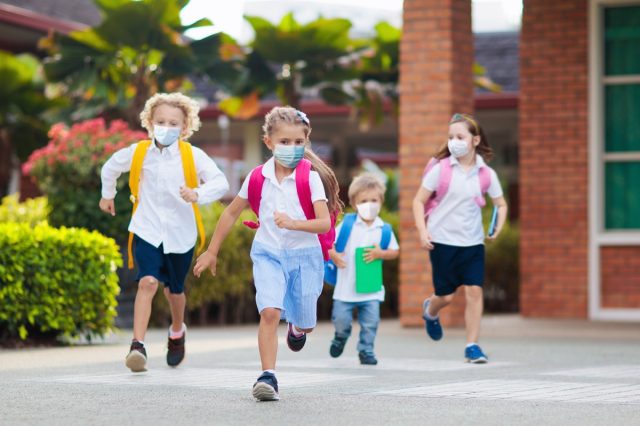Flu Hospitalizations are Rising. Here is Who is Most at Risk. — Eat This Not
Flu season arrived early this year, and combined with RSV and COVID-19, caused a perfect storm of sickness ahead of schedule. New data from the CDC shows people of color have been disproportionately affected by the flu virus, with Black people being hospitalized at a rate nearly 4 times higher than the respective rate for white patients. Hospitalizations were also 30% higher for Native Americans, and 20% higher for Hispanics. “Yes, there’s no question about it that there are certain groups of Americans that have been at higher risk,” says White House Covid task force leader Dr. Ashish Jha. “We know that people who are poorer, people who are racial and ethnic minorities throughout the whole pandemic have been more exposed to the virus, have had less access to high-quality care. That’s been a major focus of ours, is to close that gap.”
Some of this may be attributable to lower COVID vaccination rates amongst those communities, and the CDC also points this is understandable considering the aforementioned poorer access to quality healthcare and distrust of physicians and the government. The CDC is urging everyone eligible to get a flu shot and boosters as soon as possible. “We’ve had two mild flu seasons and this means we might be ripe for a severe season, because people aren’t taking all the measures they took for COVID which also had an impact on the flu,” says CDC epidemiologist Carla Black. “People haven’t had natural disease in two years so there’s less natural immunity out there.”
“What happens in the weeks and months ahead will have a large impact on how the winter goes and really what happens this winter is largely up to us as the American people,” Dr. Jha said. “Don’t wait — get your new flu shot and your new COVID shot today. If Americans did that we could save hundreds of lives each day this winter. As the Commonwealth Fund just put out a new report, a new analysis, they estimate that we can save as many as 90,000 lives and nearly a million hospitalizations if most eligible Americans got their updated vaccines. Now, that is just based on vaccines alone, which are remarkable and going to make a very large difference. But if we do better, that if people get tested when they have symptoms — we know testing leads to a diagnosis, diagnosis leads to treatments. And treatments that we have available today for free keep people out of the hospital, keep people out of the ICU, prevent the worst outcome of all.” Read on—and to ensure your health and the health of others, don’t miss these Sure Signs You’ve Already Had COVID.

Medical experts are reassuring the public it is perfectly fine to get a flu vaccine and COVID booster at the same time. “According to data from the CDC, seasonal influenza activity is elevated across the country. We’ve seen two more influenza-associated pediatric deaths last week,” says Andrea Garcia, JD, MPH, AMA’s Vice President of Science, Medicine and Public Health.
“There are a total of seven pediatric flu deaths already reported this season. And the CDC estimates that flu, so far, has caused at least 4.4 million illnesses, 38,000 hospitalizations, and 2,100 deaths. We do know that an annual flu vaccine is the best way to protect against the flu, and the CDC recommends that everyone six months and older get that flu vaccine annually. And we think it’s also important to remember that patients can get the flu vaccine and the COVID vaccine at the same time.”
“Absolutely. The CDC is recommending that you get your flu shot and your booster shot at the same time,” says infectious disease specialist Sabrina A. Assoumou. “It’s safe—we know it’s fine to get both at the same time. And getting both at once means that you don’t have to go back for a second shot, something that may or may not actually happen… Experience with other vaccines has shown that the way our bodies develop protection, known as an immune response, and possible side effects after getting vaccinated are generally the same when given alone or with other vaccines.”

RSV cases have skyrocketed, putting immense pressure on hospitals and medical facilities. “If we look at CDC data, the RSV hospitalization rate is 10 times higher than usual for this point in the season,” Garcia says. “We know that more than three-quarters of pediatric hospital beds are in use nationwide. That’s up from about two-thirds over the past two years. And 171 out of every 100,000 infants younger than six months were hospitalized with RSV for the week ending November 12. That is more than double the RSV hospitalization rate for newborns last year and seven times the rate in 2018, which is the last complete season we saw before the pandemic.
“Last week heading into the holiday, we saw the American Academy of Pediatrics and the Children’s Hospital Association request a formal emergency declaration from the federal government to support hospitals…
Read More: Flu Hospitalizations are Rising. Here is Who is Most at Risk. — Eat This Not

